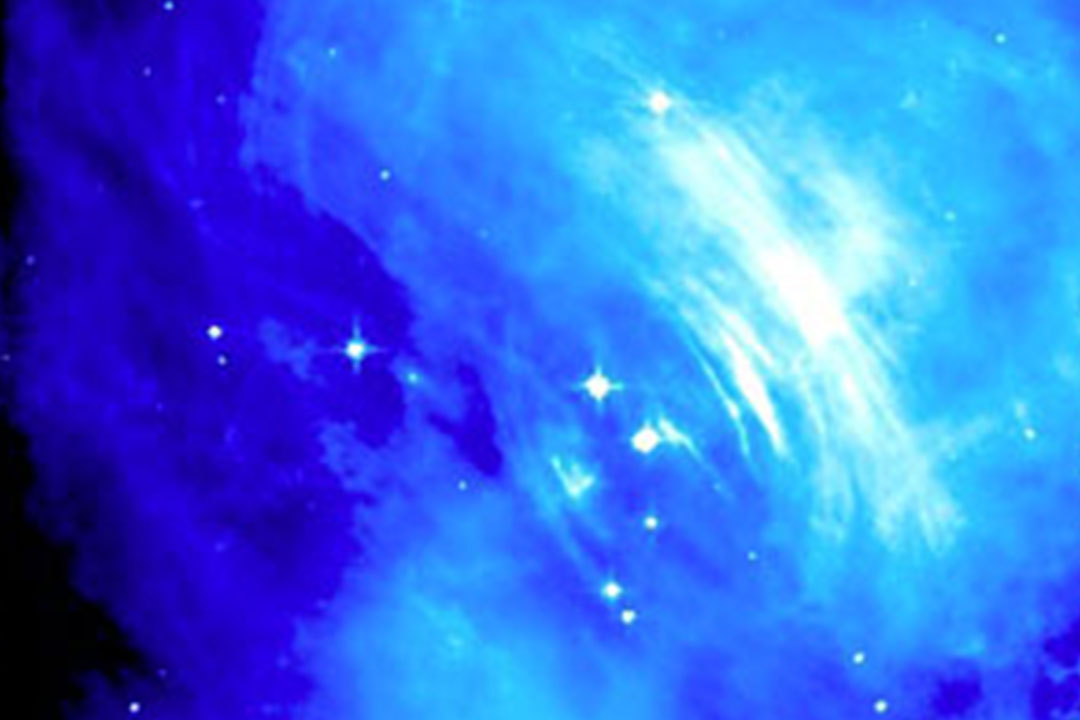It isn’t every day that something scientifically extraordinary is sighted in the sky, which makes Oleg Kargaltsev’s recent discovery that much more significant. Using images captured by NASA’s Hubble Space Telescope camera, the assistant professor of physics and his colleagues detected an ultraviolet emission from the double pulsar binary system—the only one of its kind known to be in existence. The discovery was made as a part of systematic multi-year effort devoted to examining emissions from neutron star surfaces and the winds from rotating magnetized neutron stars, referred to as pulsars.
A double pulsar binary system occurs when two neutron stars circle each other in a very tight orbit. In this case, the orbit was just 2.4 hours, an extremely short time period when compared to the Earth's year-long orbit around the Sun. By examining images taken at shorter wavelengths than those of visible light, Kargaltsev and his collaborator Dr. Martin Durant (formerly a postdoctoral researcher in Kargaltsev’s group) were able to detect a faint pulsar emission, which led to their finding.
“We believe the emission may come from the neutron star’s surface that is heated by relativistic particles precipitating from the magnetosphere, or by the heat stored in the neutron star’s interior since its formation,” said Kargaltsev. “The finding potentially allows us to gain insight into the properties of the exotic, super dense matter that only exists inside neutron stars, and cannot be obtained on Earth.”
Kargaltsev, whose passion for the field of high-energy astrophysics was sparked by the science fiction books he began reading in high school, focuses his research on the study of compact objects—an exotic state of matter, such as neutron stars, black holes, and white dwarfs. He works primarily works with space telescopes, for which he designs observation programs and then analyzes resulting data with the help of a postdoctoral scientist and a group of graduate and undergraduate students.
Currently, Kargaltsev is the principle investigator of two other Hubble Telescope research projects: The first involves studying the Crab Nebula to learn how pulsars manage to be the most powerful and continuously operating particle accelerators in our galaxy; the other project examines the Vela pulsar wind nebula using polarized optical light to date the nebula’s optical emission.
Last year, Kargaltsev led an international study of another pulsar using space-based cameras aboard NASA’s Chandra X-ray Observatory and the European Space Agency’s X-ray Multi-Mirror Mission-Newton. The team found abnormalities in the radiation emitted by the star, offering possible new insights into ordinary pulsars. The study’s findings were published in the journal Science.


